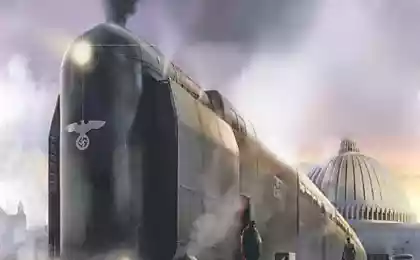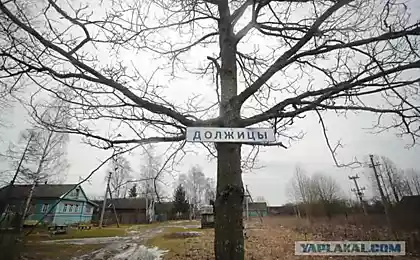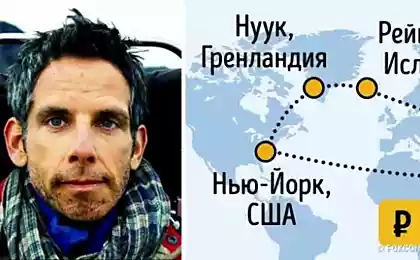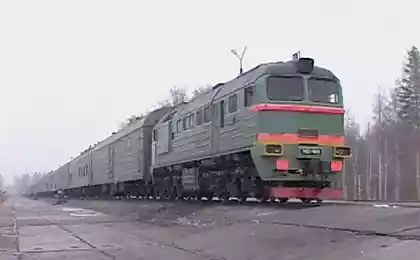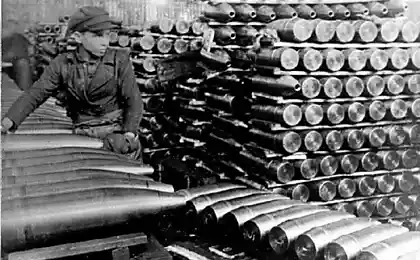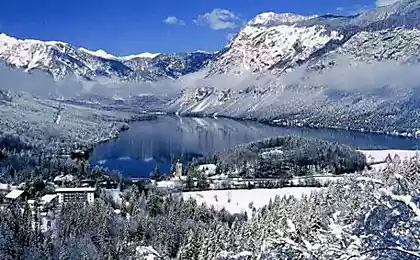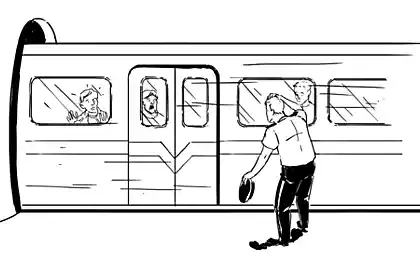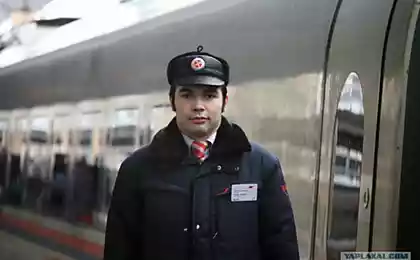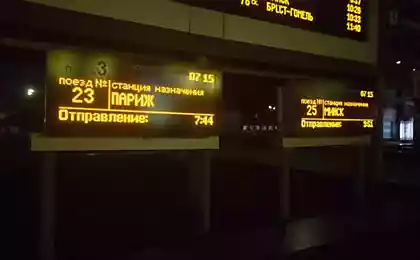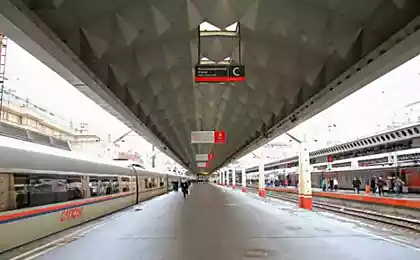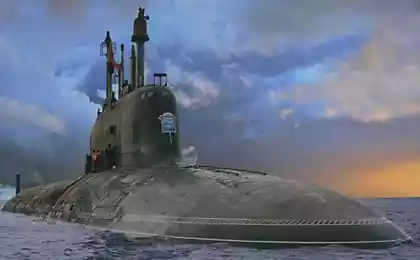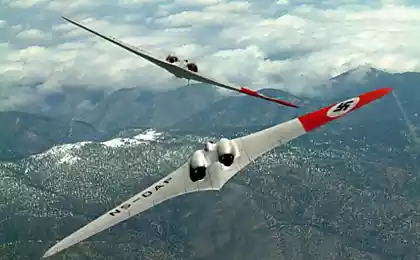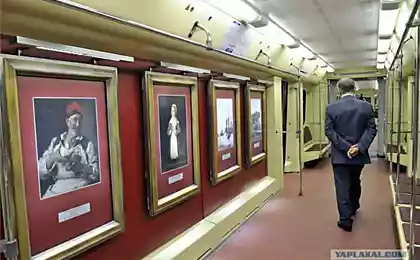1379
The train of the Third Reich, created spaces for Russia
The train of the Third Reich, created spaces for Russia - a strategic secret that allies and opponents were able to hide from Stalin. The former Soviet allies are so afraid of the appearance of such compositions in the USSR, that only the power of Khrushchev, the materials of the Twentieth Congress, the collapse of the Communist bloc, the fall of Soviet influence in the world, folding Khrushchev and the destruction of nearly built trans-line allowed to declassify material on Nazi railroad ultra-wide track. < br />
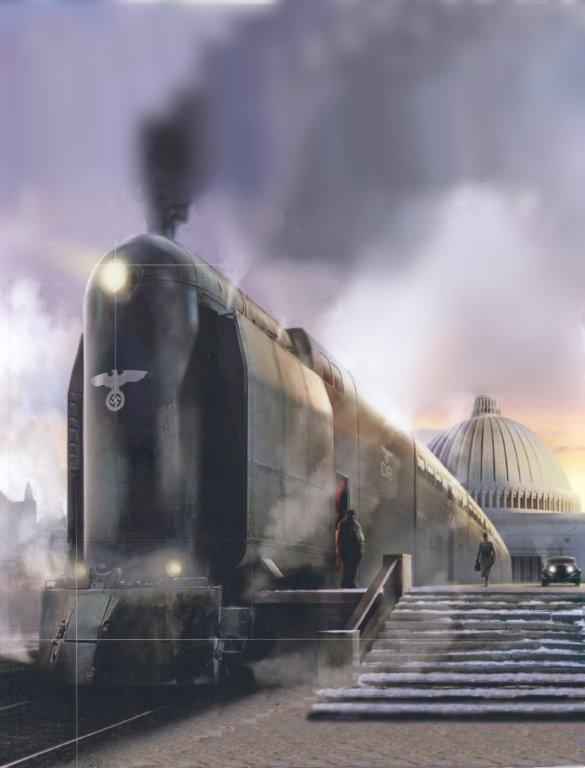
first railways had a standard gauge. The most popular world standard 1435 mm gauge was born in England, the birthplace of steam locomotive. He was introduced by George Stephenson in order to harmonize with the cartage standard gauge which in turn was due to the gauge of Roman roads, designed for horse-drawn carts with two horses in harness. The basis was taken less standard track trolleys British mines.
This state of affairs did not suit the great English inventor Isambard Brunel Kingdoma. He first made calculations suggest that an increase in track width increases the possibility of a significant increase in train speed, smooth movement of trains, reducing the cost of building locomotives in relation to the price of the subsequent volumes of passenger and cargo transportation. However, by the time the railways already has tens of thousands of kilometers, and few people have the desire to change the volume of a working road to a new, broader standard. Build a narrow gauge was cheaper and faster to perform such work could firms' average hand ».
No private industrialist will not build on the basis of the situation that has developed after 20 - 50 years.
Private owner takes care of the income from freight, of little interest to him distant prospects of town and country planning with the possibility of construction and urban growth.
However, Brunel managed to persuade entrepreneurs and start Grand Western Railway with a gauge to 2140 mm. Broad-gauge locomotives Great Western Railway have proven themselves in operation from 1833 to 1892. But in England, it was adopted more than a common standard of 1435 mm, after which the locomotives were scrapped. Thoughts about the future of humanity Brunel no one was interested ...
Today, acting bryunnelevskaya wide track has been preserved only in the Azores.
About Brunel ideas remembered in the second quarter of the twentieth century, when Europe came the cult of the totalitarian state (the term was not then carried negative load). In the second half of the 30's. in Germany, there were articles with a great track benefit calculations, but at great expense to build, she admitted usable at large distances, when operating on soft ground, etc. It was decided that in small European countries simply do a track of normal width.
Everything changed the war with the Soviet Union. Wars do not start, what would they lose the war begin to win them ... During the war Germany had the task of post-war development of the new lands of the Reich, from Archangelsk and the Urals to Baku and Persia, required the development of transportation infrastructure - construction of highways and railways. < br />
However, motorways are much more expensive construction of the railway and the cost of transportation of goods and passengers by road over rail. In connection with what Reich weapons and ammunition Dr. Fritz Todt, in September 1941, proposed in 1944, to link the Ukraine and Germany wide gauge railways. Hitler liked the idea, he saw in it new horizons of rail networks both throughout the Third Reich, and all over Europe - the giant two-three storey train on which people comfortably, whole families will be able to move through the territory of the new Germany. Moving on such trains promised to be safer and cheaper offshore.
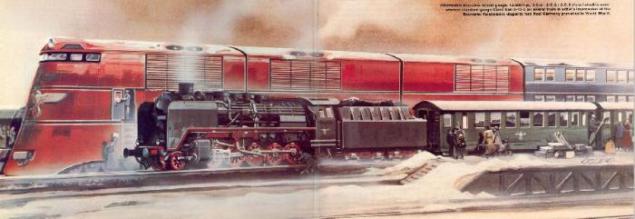
Project Manager sverhpoezdov «Breitspurbahn» was appointed doctor of technical sciences Gunter Vince (1901-1975). The project was set track width of 300 mm, the width of the carriage 6 m. At a height of 6 to 85 m.
Plans for the future route (Berlin - Moscow, Berlin - Stalingrad, Berlin - Leningrad, Berlin - Istanbul, etc.) was the Fuehrer personally, and how it's no wonder our city plans were written with the same names. Obviously, Hitler considered romantic, for future residents of Greater Germany to walk the streets of the conquered cities experiencing awe before the might of the German soldiers conquered all in bloody battles ...
Distance from Berlin to Moscow - 1923 km to Istanbul - 2429 km. to Bucharest - 1759 km. to Rome - 1627 km.
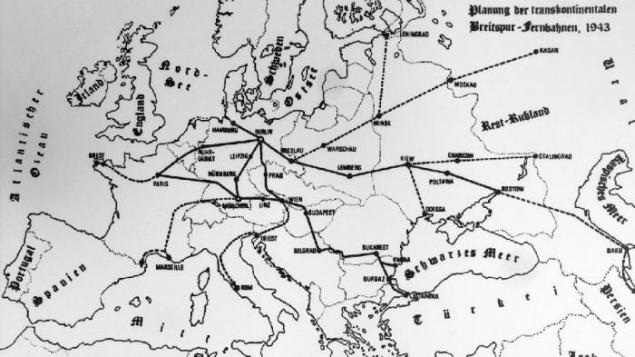
Given the distance of future routes, it was decided to reduce the initially projected rate of staff from 400 to 250 km / h.
250 km / h was considered sufficient speed passenger train giant, because any distance calculated route they took less than a day journey. In the train a cinema, a huge restaurant, hairdresser, sauna and showers, library, cozy lounges and walking decks for viewing the area.
Freight cars had a speed of 100 - 115 km / h and the load capacity of the ocean liner.
To design three types of engines - diesel locomotives, electric-powered from the central rail and locomotives with an engine on the coal dust.
Starting research and computing capabilities of the new trains, the fall of 1941 by 1944 the Germans had prepared all the documentation necessary for the construction of sverhpoezdov, ultra-wide railroad and infrastructure project. Experimental plots were made the path length of 3 km, the individual elements of the trains and layouts.
"Turning radius train 180 degrees was only 500 meters. Even with the introduction of new at that time, the estimated braking stopping distance at a speed of 250 km / h was set in 1600 meters during emergency braking, and 3000 m in the ordinary. At such speeds and braking distance optical signaling system is ineffective, especially in snow or fog. Therefore, we developed a new system in some way similar to modern electronic: using high-frequency sensors, all information displayed on the operator console and engine room. The total mass of freight train is estimated at 10 000 tonnes (compared to the mass of the most difficult contemporary compositions - up to 2,000 tons). If necessary, the three freight trains could be combined into one giant train a total weight of 30,000 tons. The length of a freight train with a locomotive was 1100-1200 m (maximum length of a modern, but without a locomotive - about 500 m). If the length is only twice the mass was increased in five - seven times. Recommendations related to the laying of paths calculations profiles rails, sleepers loads, circuit decking and ways to strengthen the soil contained in a secret study by Dr. Rumlera.
In other documents we are talking about interchanges, tunnels, outbuildings, sheds, bridges. A special case - the railroad tracks in towns and railway stations. On the sketches and models - different architectural solutions for Munich, Nuremberg, Linz, Berlin ... And on the cards - all the European territory, and most of the routes were to the east ...
According to Dr. Vince and his colleagues, the main work on the creation of a network of broad highways could be completed by 1950. Experts believe that this problem is for the German technical ideas and industry, employing almost all of occupied Europe, was able to do. No wonder that the development took place almost until 1945. So if it were not for the defeat of Nazi Germany, in which the main role played by the Soviet Union and its armed forces, secret railway projects could easily be implemented.
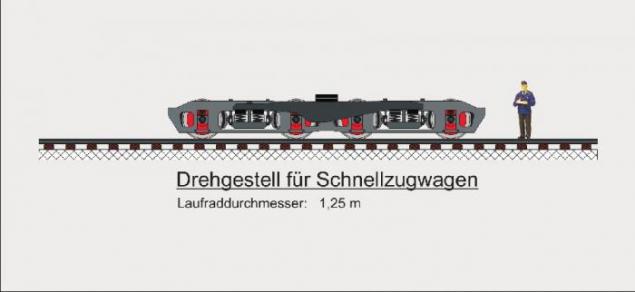
After Hitler sverhpoezdu materials were declassified in the USSR there were similar projects.
Deputy Director of the Institute of Complex Transport Problems of the USSR, Soviet scientist Vasily Bells in particular, wrote: "It is generally accepted in our country, the width of the railway track - 1524 mm - was proposed by one of the builders of the road Petersburg - Moscow engineer Melnikov. Even today, she can not satisfy us. Track width of 3 - 5 meters will enable us to build a much-lifting cars and locomotives to use the power of 40 - 50 thousand horsepower to ensure that the velocity of 250 - 350 kilometers per hour. Significantly facilitated the use of these locomotives on nuclear reactors. After all, as we know, only significant weight biological protection prevents today on our way out atomic locomotives, although satisfactory projects such locomotives are in different countries ... ».
Today the project sverhpoezda broad track important for Russia. Huge untapped spaces - from the Urals to the Pacific Ocean, on the territory of more than the entire population of Europe as well as people in Moscow alone ... And these open spaces must be filled.
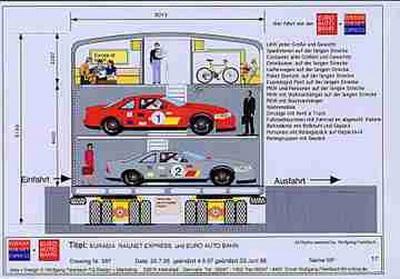
The capacity of the BAM for today: "The issue of the development of the railway infrastructure of the Far East and Eastern Siberia was discussed in Moscow at a meeting of the Public Chamber of the Russian Federation. Panellists agreed that in order to create favorable transportation conditions for the development of the Far East and Eastern Siberia require radical modernization and reconstruction of the BAM and vigorous expansion of the railway network of these regions ... Even now on a number of carrying capacity of the BAM is almost exhausted, and by 2015, the length of "bottlenecks" line will be about 3, 9 thous. km (2020 - 4, 3 thousand. km). At the same time increase the volume of cargo in 2020 in the region is forecast to 58, 1 mln. Tons to the current level. "
The main problem of the inhabitants of the Far East is a separation from the center of Russia. Prices for the main groups of goods in the Far East is higher than in Moscow, largely due to the high cost of freight.
Trains on the wide track have higher efficiency and more economical to operate at high speed, the cost gruzopassazhira them below.
But without the direct participation of the state they were never built.
Modern technology, a wise public policy and mass production equipment (with the adoption of appropriate state programs) can significantly reduce the cost of construction of the railway line ultra-wide railway.
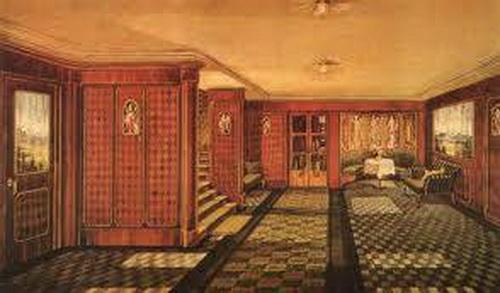
For Russia, it would be economically and geopolitically advantageous to launch a line of ultra-wide w / d of the road on the route St. Petersburg - Moscow - Vladivostok (with a branch to Yakutsk and Chukotka), Arkhangelsk - Moscow - Krasnodar.
Ultra-wide road is ideal for loose unstable soils, including our melting polar region.
We do not need nuclear reactors in locomotives, enough to build a nuclear power plant - in the unpopulated expanses of Siberia and Far East complete seysmostabilnyh places in the foreseeable future will not live people. You can let transpolar electrified highway to Magadan and Chukotka, regular passes underneath for deer and wild animals.
Today, the train from Moscow to Vladivostok goes 7 days. At a speed of 250 km / h time is reduced to half a day, at 400 km / h day on the road. But even at 1, 5 day on the road, such travel is justified as a worthy and interesting pastime - outside the beautiful scenery, the train comfortable beds, shower, instead of outdated libraries - fast internet, good restaurant, a gym and (or) a disco.
The friends from Moscow and Altai will be able to visit each other on weekends.
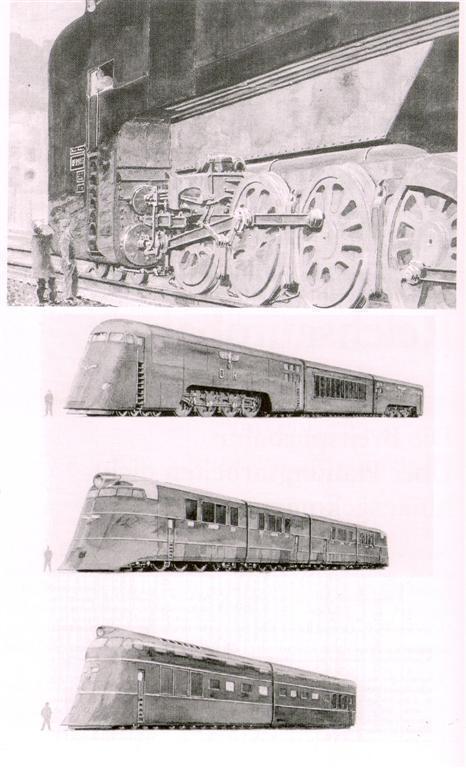
A powerful incentive for the realization of this project would be the construction of the new capital of Russia in the Far East.
Ideal for the new capital on the banks of the Sea of Okhotsk north of Sakhalin island in front Shantar. The area is closed from cold northern winds, far from the border with China, is protected from the sea Kuril ridge (where you can set the air defense and submarine detection).

first railways had a standard gauge. The most popular world standard 1435 mm gauge was born in England, the birthplace of steam locomotive. He was introduced by George Stephenson in order to harmonize with the cartage standard gauge which in turn was due to the gauge of Roman roads, designed for horse-drawn carts with two horses in harness. The basis was taken less standard track trolleys British mines.
This state of affairs did not suit the great English inventor Isambard Brunel Kingdoma. He first made calculations suggest that an increase in track width increases the possibility of a significant increase in train speed, smooth movement of trains, reducing the cost of building locomotives in relation to the price of the subsequent volumes of passenger and cargo transportation. However, by the time the railways already has tens of thousands of kilometers, and few people have the desire to change the volume of a working road to a new, broader standard. Build a narrow gauge was cheaper and faster to perform such work could firms' average hand ».
No private industrialist will not build on the basis of the situation that has developed after 20 - 50 years.
Private owner takes care of the income from freight, of little interest to him distant prospects of town and country planning with the possibility of construction and urban growth.
However, Brunel managed to persuade entrepreneurs and start Grand Western Railway with a gauge to 2140 mm. Broad-gauge locomotives Great Western Railway have proven themselves in operation from 1833 to 1892. But in England, it was adopted more than a common standard of 1435 mm, after which the locomotives were scrapped. Thoughts about the future of humanity Brunel no one was interested ...
Today, acting bryunnelevskaya wide track has been preserved only in the Azores.
About Brunel ideas remembered in the second quarter of the twentieth century, when Europe came the cult of the totalitarian state (the term was not then carried negative load). In the second half of the 30's. in Germany, there were articles with a great track benefit calculations, but at great expense to build, she admitted usable at large distances, when operating on soft ground, etc. It was decided that in small European countries simply do a track of normal width.
Everything changed the war with the Soviet Union. Wars do not start, what would they lose the war begin to win them ... During the war Germany had the task of post-war development of the new lands of the Reich, from Archangelsk and the Urals to Baku and Persia, required the development of transportation infrastructure - construction of highways and railways. < br />
However, motorways are much more expensive construction of the railway and the cost of transportation of goods and passengers by road over rail. In connection with what Reich weapons and ammunition Dr. Fritz Todt, in September 1941, proposed in 1944, to link the Ukraine and Germany wide gauge railways. Hitler liked the idea, he saw in it new horizons of rail networks both throughout the Third Reich, and all over Europe - the giant two-three storey train on which people comfortably, whole families will be able to move through the territory of the new Germany. Moving on such trains promised to be safer and cheaper offshore.

Project Manager sverhpoezdov «Breitspurbahn» was appointed doctor of technical sciences Gunter Vince (1901-1975). The project was set track width of 300 mm, the width of the carriage 6 m. At a height of 6 to 85 m.
Plans for the future route (Berlin - Moscow, Berlin - Stalingrad, Berlin - Leningrad, Berlin - Istanbul, etc.) was the Fuehrer personally, and how it's no wonder our city plans were written with the same names. Obviously, Hitler considered romantic, for future residents of Greater Germany to walk the streets of the conquered cities experiencing awe before the might of the German soldiers conquered all in bloody battles ...
Distance from Berlin to Moscow - 1923 km to Istanbul - 2429 km. to Bucharest - 1759 km. to Rome - 1627 km.

Given the distance of future routes, it was decided to reduce the initially projected rate of staff from 400 to 250 km / h.
250 km / h was considered sufficient speed passenger train giant, because any distance calculated route they took less than a day journey. In the train a cinema, a huge restaurant, hairdresser, sauna and showers, library, cozy lounges and walking decks for viewing the area.
Freight cars had a speed of 100 - 115 km / h and the load capacity of the ocean liner.
To design three types of engines - diesel locomotives, electric-powered from the central rail and locomotives with an engine on the coal dust.
Starting research and computing capabilities of the new trains, the fall of 1941 by 1944 the Germans had prepared all the documentation necessary for the construction of sverhpoezdov, ultra-wide railroad and infrastructure project. Experimental plots were made the path length of 3 km, the individual elements of the trains and layouts.
"Turning radius train 180 degrees was only 500 meters. Even with the introduction of new at that time, the estimated braking stopping distance at a speed of 250 km / h was set in 1600 meters during emergency braking, and 3000 m in the ordinary. At such speeds and braking distance optical signaling system is ineffective, especially in snow or fog. Therefore, we developed a new system in some way similar to modern electronic: using high-frequency sensors, all information displayed on the operator console and engine room. The total mass of freight train is estimated at 10 000 tonnes (compared to the mass of the most difficult contemporary compositions - up to 2,000 tons). If necessary, the three freight trains could be combined into one giant train a total weight of 30,000 tons. The length of a freight train with a locomotive was 1100-1200 m (maximum length of a modern, but without a locomotive - about 500 m). If the length is only twice the mass was increased in five - seven times. Recommendations related to the laying of paths calculations profiles rails, sleepers loads, circuit decking and ways to strengthen the soil contained in a secret study by Dr. Rumlera.
In other documents we are talking about interchanges, tunnels, outbuildings, sheds, bridges. A special case - the railroad tracks in towns and railway stations. On the sketches and models - different architectural solutions for Munich, Nuremberg, Linz, Berlin ... And on the cards - all the European territory, and most of the routes were to the east ...
According to Dr. Vince and his colleagues, the main work on the creation of a network of broad highways could be completed by 1950. Experts believe that this problem is for the German technical ideas and industry, employing almost all of occupied Europe, was able to do. No wonder that the development took place almost until 1945. So if it were not for the defeat of Nazi Germany, in which the main role played by the Soviet Union and its armed forces, secret railway projects could easily be implemented.

After Hitler sverhpoezdu materials were declassified in the USSR there were similar projects.
Deputy Director of the Institute of Complex Transport Problems of the USSR, Soviet scientist Vasily Bells in particular, wrote: "It is generally accepted in our country, the width of the railway track - 1524 mm - was proposed by one of the builders of the road Petersburg - Moscow engineer Melnikov. Even today, she can not satisfy us. Track width of 3 - 5 meters will enable us to build a much-lifting cars and locomotives to use the power of 40 - 50 thousand horsepower to ensure that the velocity of 250 - 350 kilometers per hour. Significantly facilitated the use of these locomotives on nuclear reactors. After all, as we know, only significant weight biological protection prevents today on our way out atomic locomotives, although satisfactory projects such locomotives are in different countries ... ».
Today the project sverhpoezda broad track important for Russia. Huge untapped spaces - from the Urals to the Pacific Ocean, on the territory of more than the entire population of Europe as well as people in Moscow alone ... And these open spaces must be filled.

The capacity of the BAM for today: "The issue of the development of the railway infrastructure of the Far East and Eastern Siberia was discussed in Moscow at a meeting of the Public Chamber of the Russian Federation. Panellists agreed that in order to create favorable transportation conditions for the development of the Far East and Eastern Siberia require radical modernization and reconstruction of the BAM and vigorous expansion of the railway network of these regions ... Even now on a number of carrying capacity of the BAM is almost exhausted, and by 2015, the length of "bottlenecks" line will be about 3, 9 thous. km (2020 - 4, 3 thousand. km). At the same time increase the volume of cargo in 2020 in the region is forecast to 58, 1 mln. Tons to the current level. "
The main problem of the inhabitants of the Far East is a separation from the center of Russia. Prices for the main groups of goods in the Far East is higher than in Moscow, largely due to the high cost of freight.
Trains on the wide track have higher efficiency and more economical to operate at high speed, the cost gruzopassazhira them below.
But without the direct participation of the state they were never built.
Modern technology, a wise public policy and mass production equipment (with the adoption of appropriate state programs) can significantly reduce the cost of construction of the railway line ultra-wide railway.

For Russia, it would be economically and geopolitically advantageous to launch a line of ultra-wide w / d of the road on the route St. Petersburg - Moscow - Vladivostok (with a branch to Yakutsk and Chukotka), Arkhangelsk - Moscow - Krasnodar.
Ultra-wide road is ideal for loose unstable soils, including our melting polar region.
We do not need nuclear reactors in locomotives, enough to build a nuclear power plant - in the unpopulated expanses of Siberia and Far East complete seysmostabilnyh places in the foreseeable future will not live people. You can let transpolar electrified highway to Magadan and Chukotka, regular passes underneath for deer and wild animals.
Today, the train from Moscow to Vladivostok goes 7 days. At a speed of 250 km / h time is reduced to half a day, at 400 km / h day on the road. But even at 1, 5 day on the road, such travel is justified as a worthy and interesting pastime - outside the beautiful scenery, the train comfortable beds, shower, instead of outdated libraries - fast internet, good restaurant, a gym and (or) a disco.
The friends from Moscow and Altai will be able to visit each other on weekends.

A powerful incentive for the realization of this project would be the construction of the new capital of Russia in the Far East.
Ideal for the new capital on the banks of the Sea of Okhotsk north of Sakhalin island in front Shantar. The area is closed from cold northern winds, far from the border with China, is protected from the sea Kuril ridge (where you can set the air defense and submarine detection).

